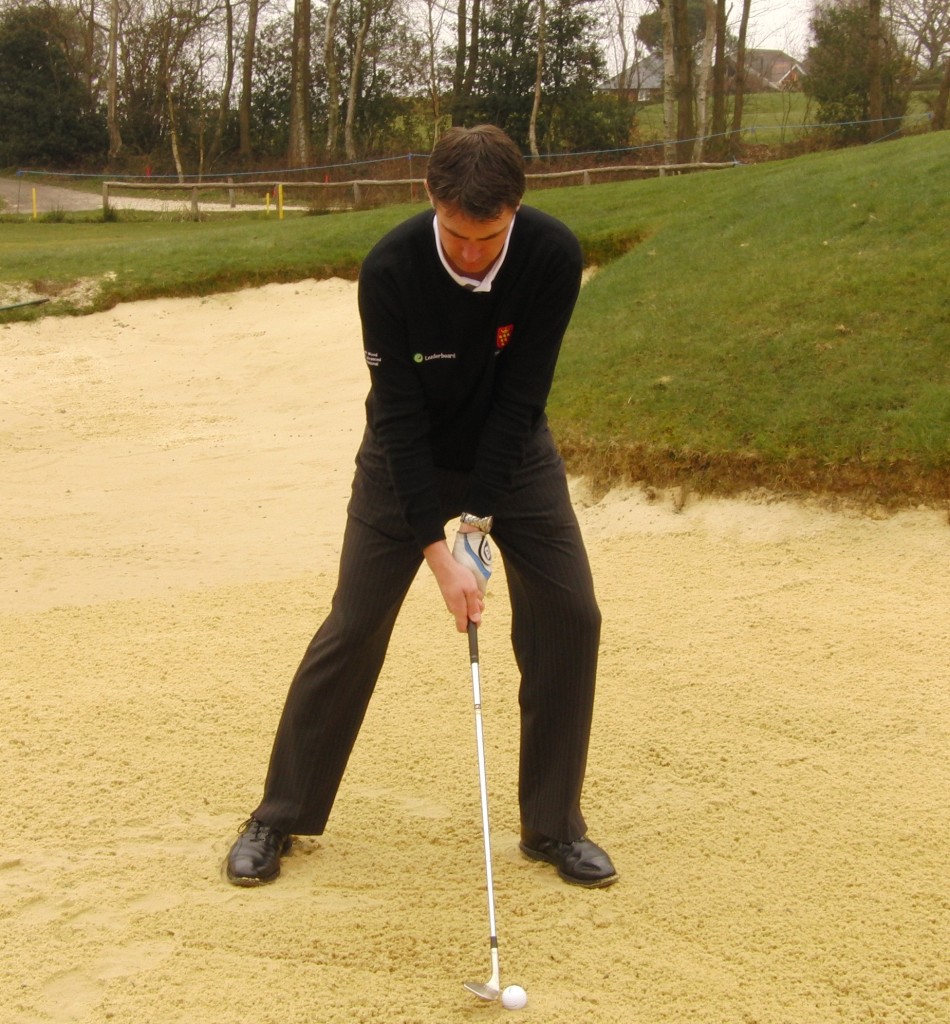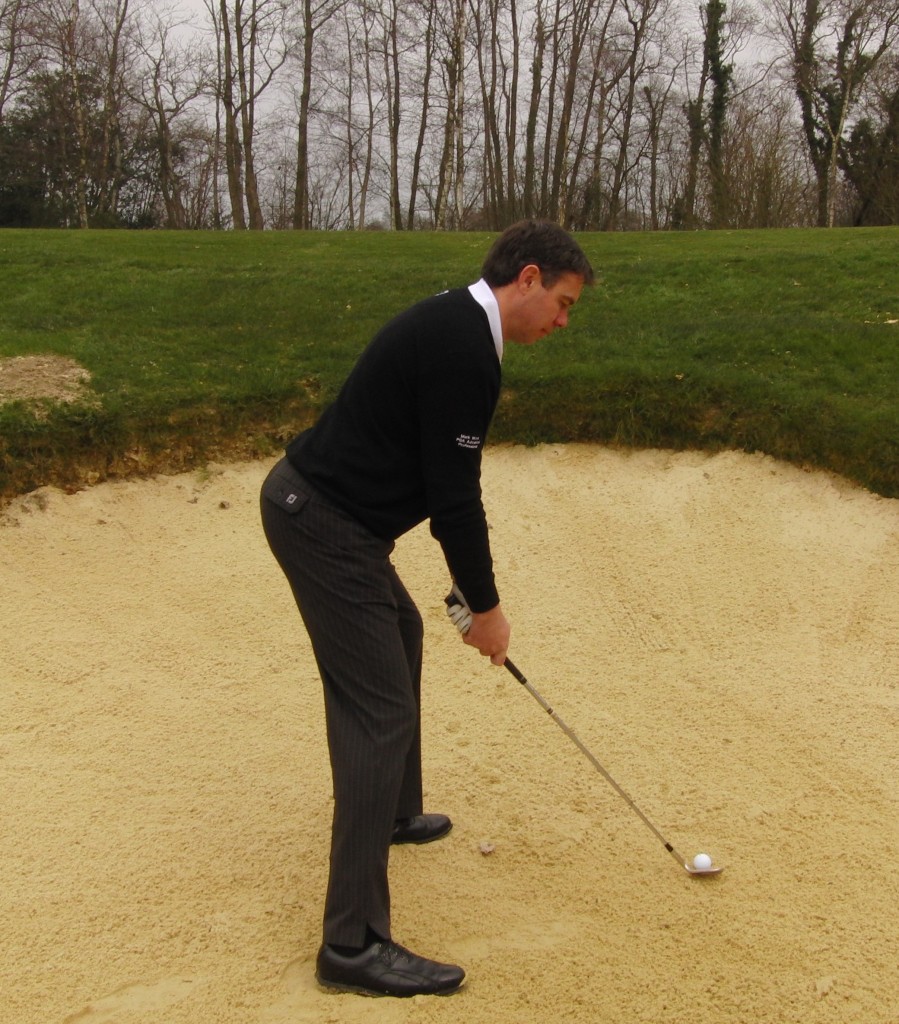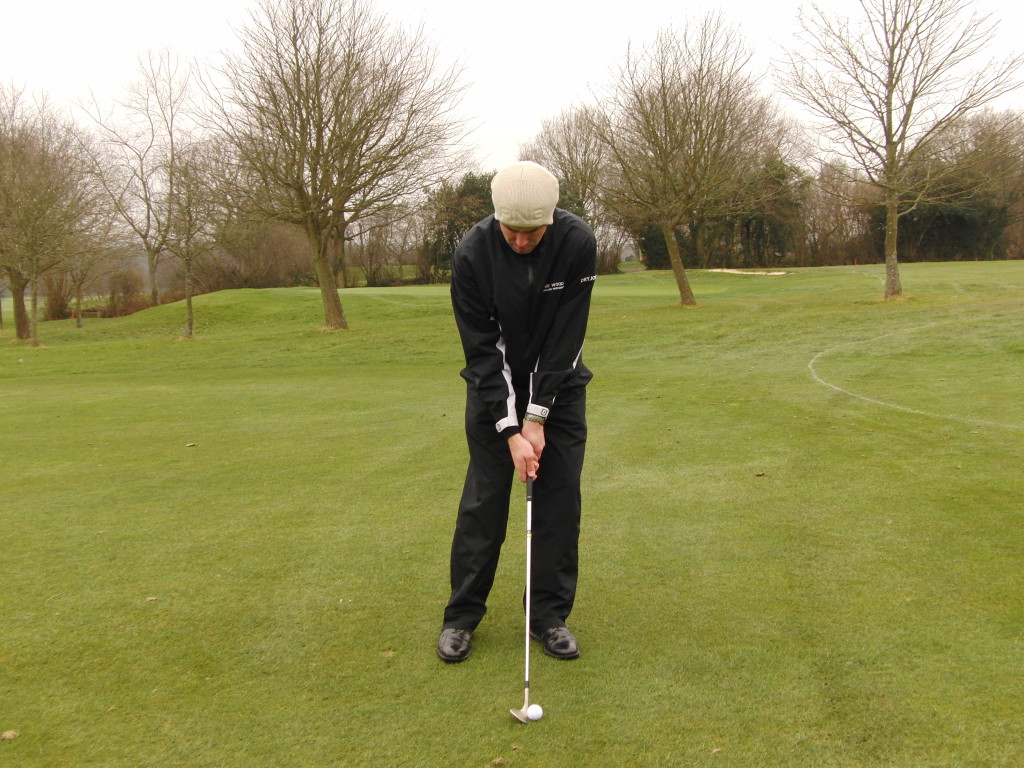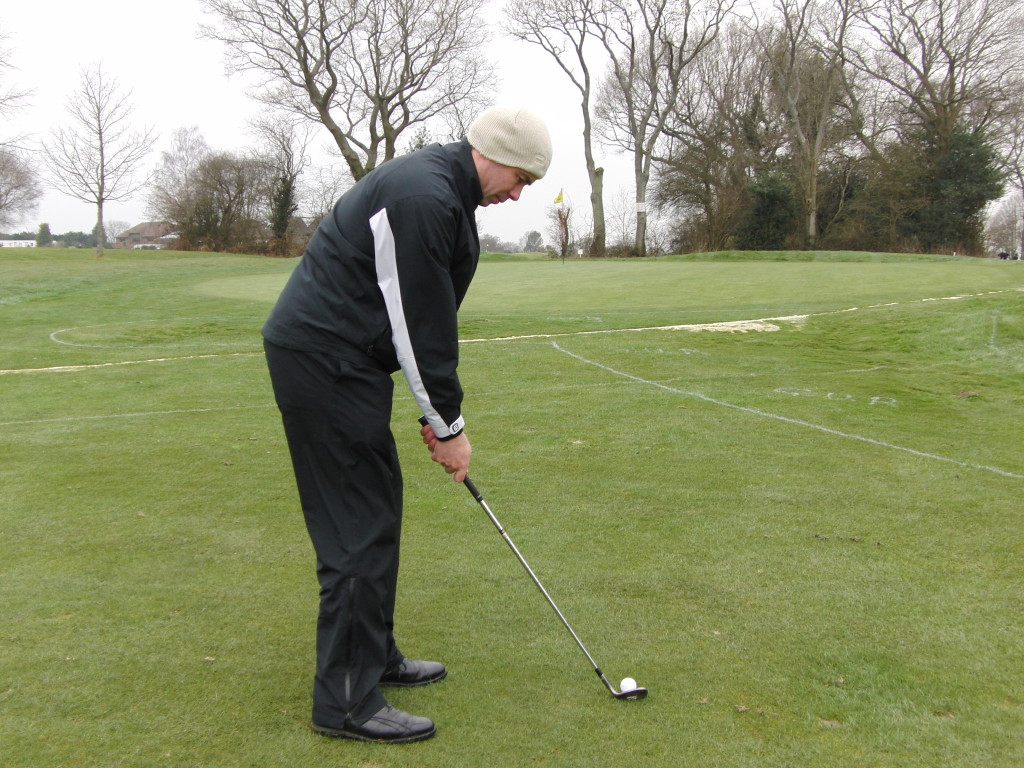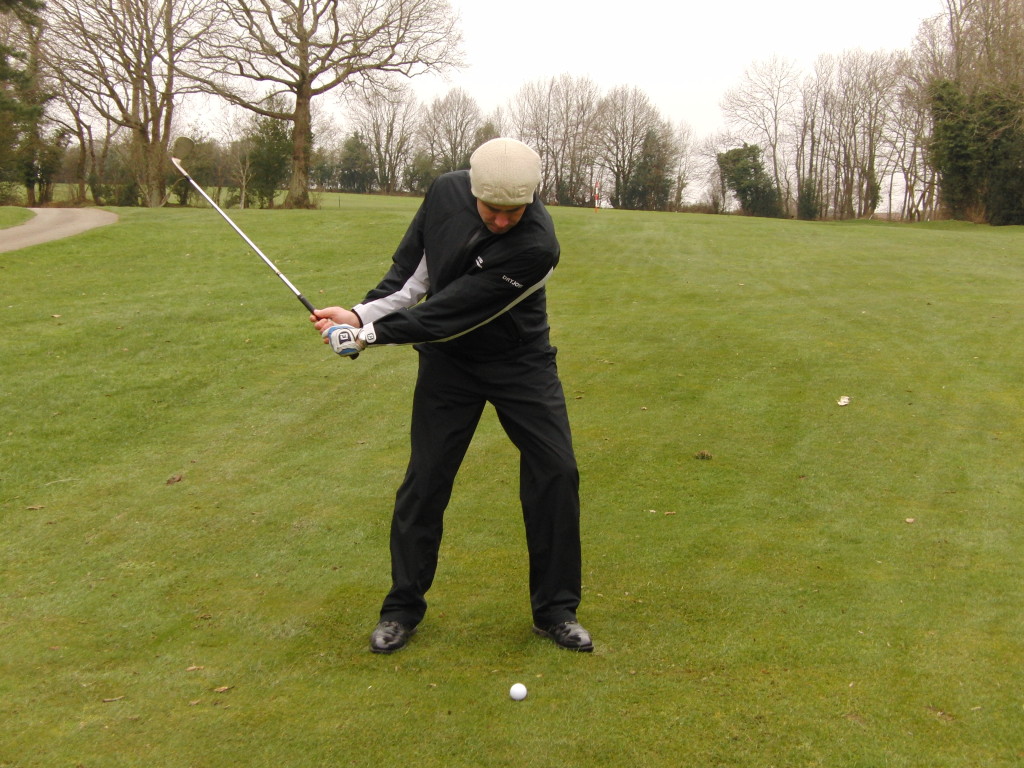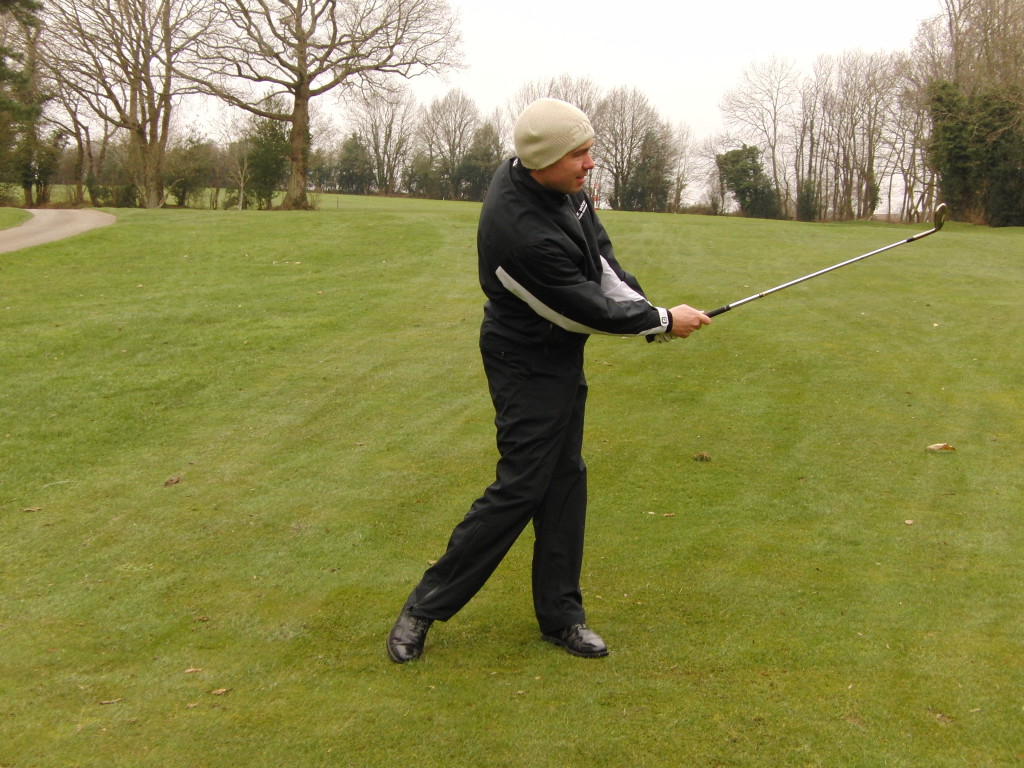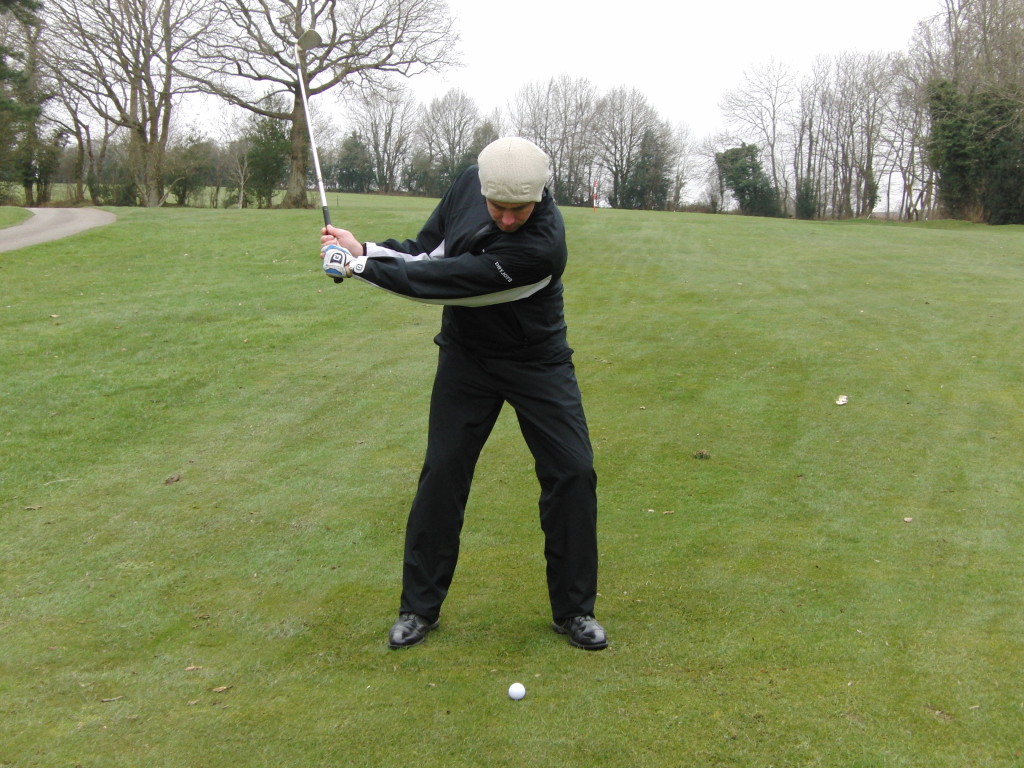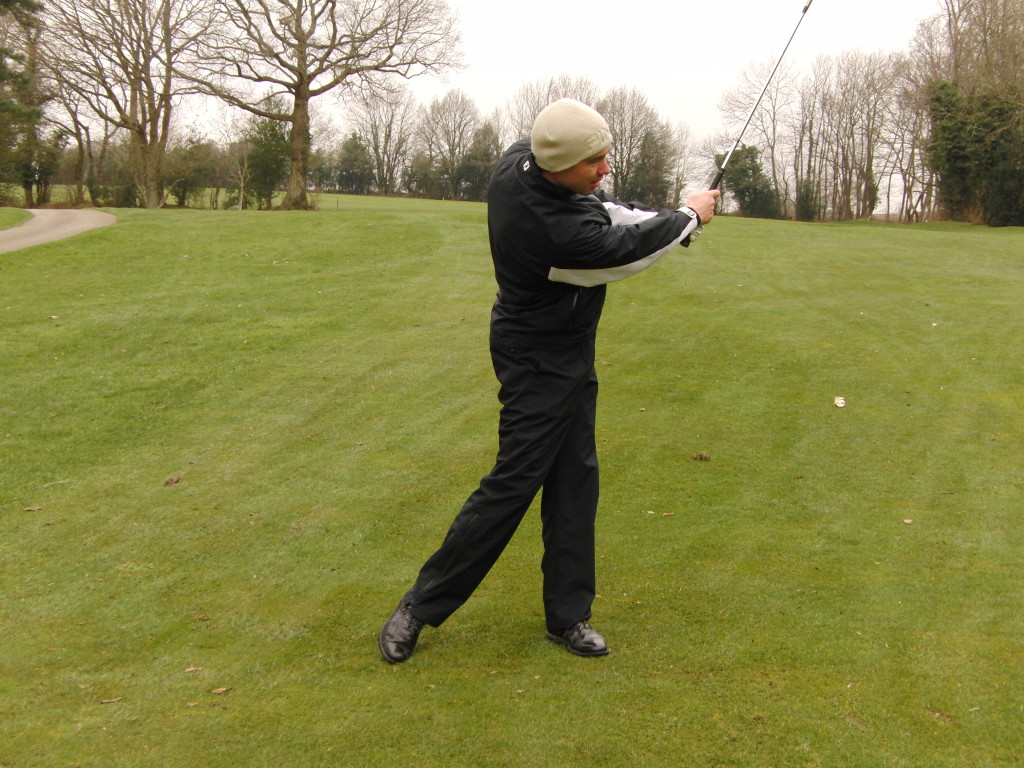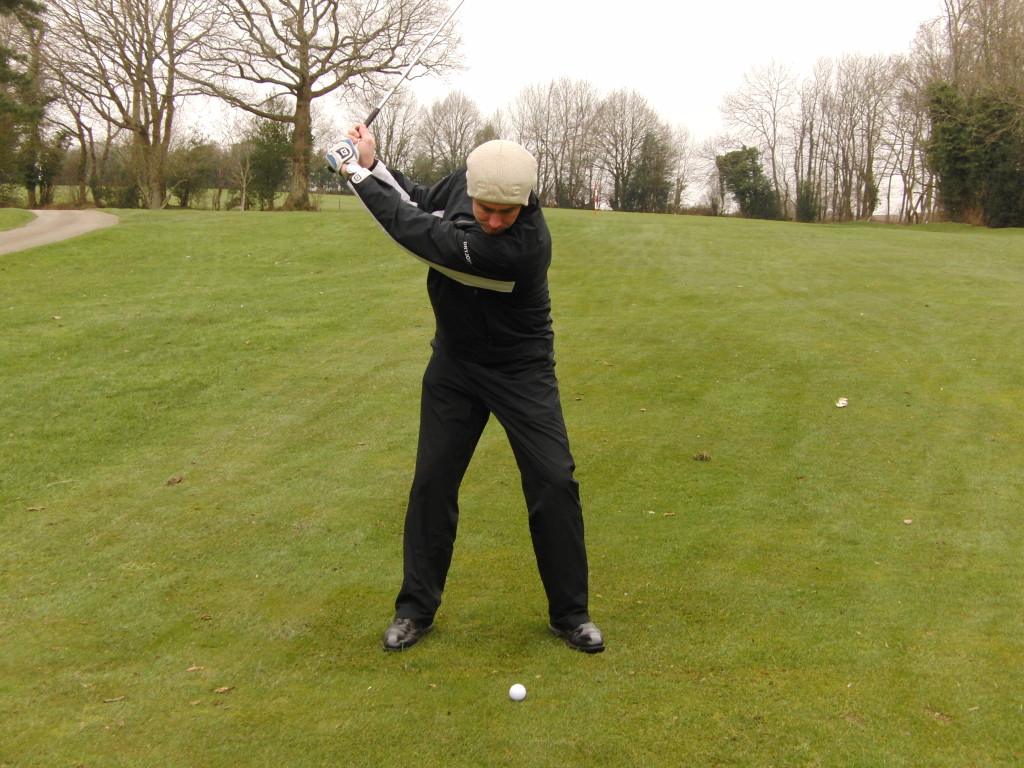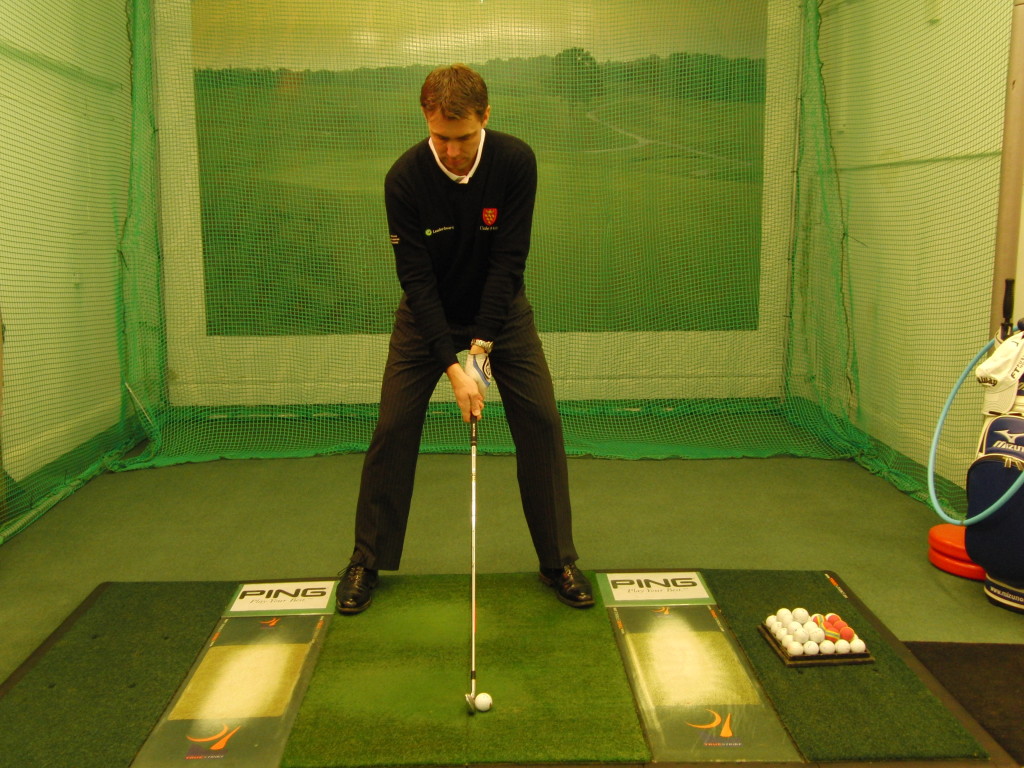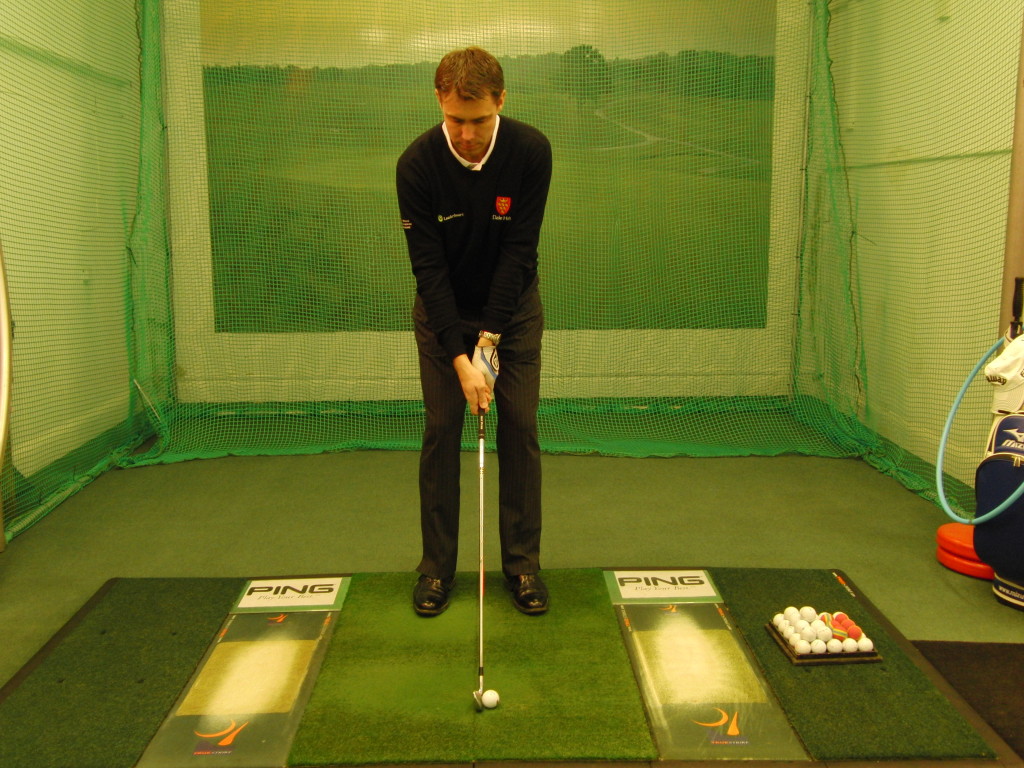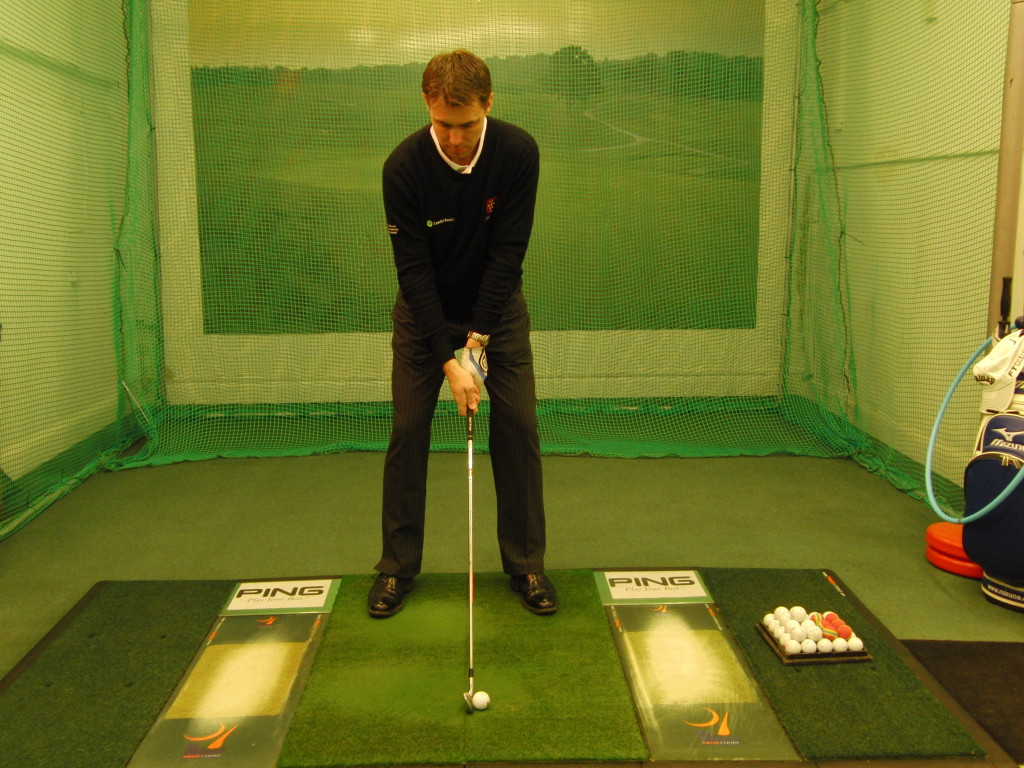Posts Tagged ‘Golf Lesson Kent’
The Bernard Langer Solution
The Bernard Langer Solution
Bernard Langer became one of the world’s best players and a two-time Masters champion by identifying his limiting factor and overcoming a problem few players in history have ever conquered. At a very early age he developed the putting “yips.” In a nutshell, that means he lost control of the muscles in his hands and arms when facing short putts. From three feet he might leave a putt short by 18 inches, then, on the very next green, be forced to watch in anguish as his unruly putter fired the ball 10 feet past the hole! Recognizing that this problem would prevent him permanently from reaching his goals, no matter how good his iron play, he spent hour upon hour, week after week, working to overcome his limitation. He took Gary Player as his model and, through determination and will power, he finally found a stroke that would work for him. For several years he was among the top players in European golf, then, without warning, the dreaded yips returned!
Once again he was compelled to go back to the practice putting green in search of a cure. Eventually he discovered a unique and creative grip that entails placing his left hand about ten inches down the shaft and letting the shaft rest against the inside of his left forearm. He then locks the grip of the club in place by gripping both the shaft and his left wrist with his right hand. While it may be one of the most unorthodox grips in history, it has enabled him to play competitive golf at the highest level once again.
Langer had the courage and determination not only to confront his weakness but to make it his strength. No one wins the Masters putting badly!
What’s your weakness?
Post it in the comments below.
From Your Friends at Mark Wood Golf Academy
P.S. The weather’s no joke, come out and make the most
of the sun!
Mark
PGA Advanced Professional
UK’s No1 Golf Coach
Mark Wood Golf Academy
The Best Golf Lessons in Sussex
Sam Snead
Is This Best Golf Joke Ever?
I don’t know but I can just picture “Slaming Sam” delivering the lines with that hillbilly drawl and a
glint in his eye!
A number of years after he retired, Sam Snead was playing a round of golf with a young would- be
Tour player. As they were waiting at the tee box on the first hole, Sam’s opponent — who was rather
large and strong — asked Sam’s advice about the upcoming tee shot. “Mr. Snead, do you think I can
clear those tall pine trees over on the right?”
Sam thought for a moment and replied, “When I was your
age, I could clear those trees with no problem.”
The young man, brimming with confidence, teed up his
ball, took a few practice swings, and promptly whacked
his ball right into the middle of the pine grove. He looked
at Sam, quizzically and disgustedly threw his driver back
into the bag as Sam coolly remarked, “Of course, when I
was your age, those trees were only eight feet tall!”
Think you have a better golf joke?
Post it in the comments below.
From Your Friends at Mark Wood Golf Academy
P.S. The weather’s no joke, come out and make the most
of the sun!
Mark
PGA Advanced Professional
UK’s No1 Golf Coach
Mark Wood Golf Academy
The Best Golf Lessons in Sussex
The Laws of Golf
The laws of golf
LAW 1: No matter how bad your last shot was, the worst is yet to come. This law does not expire on the 18th hole, since it has the supernatural tendency to extend over the course of a tournament, a summer and, eventually, a lifetime.
LAW 2: Your best round of golf will be followed almost immediately by your worst round ever. The probability of the latter increases with the number of people you tell about the former.
LAW 3: Brand new golf balls are water-magnetic. Though this cannot be proven in the lab, it is a known fact that the more expensive the golf ball, the greater its attraction to water.
LAW 4: Golf balls never bounce off of trees back into play. If one does, the tree is breaking a law of the universe and should be cut down.
LAW 5: No matter what causes a golfer to muff a shot, all his playing partners must solemnly chant “You looked up,” or invoke the wrath of the universe.
LAW 6: The higher a golfer’s handicap, the more qualified he deems himself as an instructor.
LAW 7: Every par-three hole in the world has a secret desire to humiliate golfers. The shorter the hole, the greater its desire.
LAW 8: Topping a 3-iron is the most painful torture known to man.
LAW 9: Palm trees eat golf balls.
LAW 10: Sand is alive. If it isn’t, how do you explain the way it works against you?
LAW 11: Golf carts always run out of juice at the farthest point from the clubhouse.
LAW 12: A golfer hitting into your group will always be bigger than anyone in your group. Likewise, a group you accidentally hit into will consist of a football player, a professional wrestler, a convicted murderer and an IRS agent — or some similar combination.
LAW 13: All 3-woods are demon-possessed.
LAW 14: Golf balls from the same “sleeve” tend to follow one another, particularly out of bounds or into the water (See Law three).
LAW 15: A severe slice is a thing of awesome power and beauty.
LAW 16: “Nice lag” can usually be translated to “lousy putt.” Similarly, “tough break” can usually be translated “way to miss an easy one, sucker.”
LAW 17: The person you would most hate to lose to will always be the one who beats you.
LAW 18: The last three holes of a round will automatically adjust your score to what it really should be.
LAW 19: Golf should be given up at least twice per month.
LAW 20: All vows taken on a golf course shall be valid only until the sunset.
Mark
PGA Advanced Professional
UK’s No1 Golf Coach
Mark Wood Golf Academy
The Best Golf Lessons in Sussex
Define the Problem
Define the problem
The first step in championship problem solving is to make sure you determine the exact nature of your problem. Many a tournament has been lost by the player who attempts an impossible shot from the rough in the vain hope of making birdie where bogey will win the day. The six or seven he winds up making takes him right out of contention. Precisely defining the problem is an art in itself.
Golf teacher Tommy Armour, author of the timeless masterpiece of instruction, How to play your best golf all the time, was a master at finding a player’s problem and no one was better at accurately defining it. One day a club member approached him to schedule a lesson.
“What seems to be your problem?” questioned Armour.
“I can’t get backspin on my long-iron shots, like the pros do,” he said.
“How far do you hit your 3-iron?” asked Armour
“About 175 yards,” replied the member.
“Then why on earth would you want to put backspin on the ball?” asked Armour.
What’s your problem?
Is it lack of consistency, distance, three putting or you just want to improve but not sure how to?
Let me help you!
So stop focusing on back spin and move your golf game forward…
book a lesson now http://www.markwoodgolfacademy.co.uk/booking/ or call 07796 271661
I hope you enjoyed the article, any comments or Questions then please leave a comment below..
Until next time I wish you all the golfing success
Mark
Mark Wood Golf Academy
Dale Hill hotel & golf club
East Sussex
The UK’s No1 Golf Coach where it counts – Results!
Five effective ways to improve the quality of your practice part one by Andrew Wood
Five effective ways to improve the quality of your practice part one
Playing round after round, without intervening practice sessions, does little to improve your game. You may have a few real life experiences that prove you should have taken a penalty shot and dropped out of trouble, instead of hitting it deeper into the woods, but that’s learning the hard way. Here are five keys to quickly and dramatically improving your performance in your game, your business and your personal life.
1. Record, shoot video or take notes
Keep a record of your actions and the results they produce for you. By recording your performance, on videotape if you are golfing, or by using audiotape or notes if you are at work, you can start to look for helpful or harmful patterns.
- How many putts a round do you average?
- Do you hit all your drives in the right rough or are most of your bad shots pulled?
- What percentage of prospects do you close?
This type of self-evaluation will indicate clearly to you the areas most urgently in need of improvement? As you collect this valuable information, continue to take notes, writing down both the problem and solution. Chart your progress and monitor your results frequently, even daily.
In the heat of battle, it is amazing how even the most proficient among us tends to forget the simplest of fundamentals, like keeping our heads still, taking the clubhead away slowly or remembering to ask for a sale. Brief notes in a diary, on scraps of paper or even on table napkins have provided a written reminder of a key fundamental and resulted in victory in many a tournament. For some champions the secret is contained in a single word or phrase taped inside their locker door.
When Britain’s Tony Jacklin arrived at his locker on the final day of the 1970 US Open Championship, he found his good friend Tom Weiskopf had taped a message to the door. The message was short and sweet. There were only two words. “Tempo, Jacko.”
Now who would have thought the reigning British Open Champion, a man going into the final round with one of the biggest leads in US Open history, would need such basic advice. As it happened, Jacklin gave much of the credit for his victory to those two little words. The difficult Hazeltine National course made some of the big name players of the day pay a severe toll. Dave Hill, who finished second, said, “All this course lacks is 80 acres of corn and some cows.” Well, in spite of Hill’s lack of affection for the venue, Jacklin maintained that smooth tempo and became the first Briton to win the US Open since Ted Ray in 1920, and by seven shots, the second largest margin in history. Weiskopf’s little reminder helped him achieve his victory.
As you know, we may not always need to be told, but we do need to be reminded from time to time.
I hope you enjoyed the article, any comments or Questions then please leave a comment below..
Until next time I wish you all the golfing success
Mark
Mark Wood Golf Academy
Dale Hill hotel & golf club
East Sussex
The Greenside Bunker Shot Set Up
The Greenside Bunker Shot Set Up
When setting up to play a regular greenside bunker shot there are a few important things to get right as this will go a long way in helping you to execute the shot.
Firstly I want to briefly describe the bounce of the club and what it does. The bounce of the wedge is there to help you and it will guide through the sand if used correctly.
As the bunkers have become better over the last few years, with the quality of the sand and drainage, manufactures have improved there wedges with varying degrees of loft’s and bounce angles. With this in mind you have all the correct tools to be playing this shot well. The only thing that is still “old school” is the way golfers set up to these shots, so I am going to explain the modern way of escaping the sand with ease.
“If the leading edge digs in, poor bunker shots will be the result. Remember the bounce of the wedge is your friend, so please use it”
Open the clubface a little as this will help encourage you to use the bounce of the wedge. Grip the club after you have opened the clubface a little and use your normal neutral grip.
Take a nice wide stance a wriggle your feet into the sand a little as this helps you to feel the texture of the sand with your feet. It also lowers your centre of gravity ensuring sand is struck from under the ball.
Keep at least 70 percent of your weight on the left side as I want you to turn around your left side in the swing. Setting your weight forwards also helps create a consistent strike pattern in the sand. The feeling here is that you are braced into the left side.
Keep the ball position forward in the stance, just inside the left heel as this will help create a consistent strike pattern in the sand, forget the old cliché of looking 2 inches behind the ball as this set up will promote the strike pattern required, one less thing to worry about!!
The shaft angle should be leaning back just behind the ball as this will ensure the bounce of the wedge is being used. If you lean the shaft forwards you will start to dig in too much with the leading edge creating poor quality bunker shots.
Keep the body alignment parallel to the target line as this will encourage you to swing the club down the target line and not across it, promoting pure backspin and not slice side spin.
Keep your posture angles nice and engaged as stranding slumped is a sure way to hit bad shots!!
I also like to feel that I am stretching out towards the ball a little with my arms as this lowers the shaft a little and helps create the soft swing arc required to play these shots well.
I hope you enjoyed the article, any comments or Questions then please leave a comment below..
Until next time I wish you all the golfing success
Mark
Mark Wood Golf Academy
Dale Hill hotel & golf club
East Sussex
Seve
Severiano Ballesteros was born on 9 April 1957 in Pedreña (Cantabria), a small village on the southern shore of the Bay of Santander in the north of Spain.
Baldomero, his father, had formed part of one of the best rowing crews in history in Spanish “traineras” (fixed bench fishermen’s boat). In Pedreña there is a great tradition for this type of tough sport, although golf also formed part of the atmosphere at that time-the 50’s and 60’s. if, in all the Pedreña homes one could always find a member of the family who had caddied at the Royal Pedreña Golf Club – a prestigious club inaugurated in 1928 by de King of Spain – in the Ballesteros family this was more than a customary as Seve’s older brothers Baldomero, Manuel and Vicente were all professional golfers, as was his uncle Ramon Sota, his mother’s brother, one of the best golfers in Europe in the sixties, winner of four Spanish Professionals Championships, sixth in the 1965 U.S. Masters and a member of runners-up teams at two World Cups, in 1963 and 1965 (behind the USA and South Africa, respectively), in addition to other important victories all over the world.
With this background, plus of course, impressive natural talent and his tremendous love of the game and enthusiasm for work, Seve, with a 3-iron his brother Manuel had given him as a present, invented a huge variety of shots that bestowed his game with enormous versatility.
At the age of 10 he took part in his first caddies tournament. He recorded a score of 51 over the 9 holes, beginning with a 10 on the first hole – a par 3. The following year, he came second with 42. At the age of 12, then playing the full 18 holes, he won the tournament with a score of 79. His made progress at lightening speed – at 13 he was already finishing with 65 – and he picked up everything he saw. In 1971, when the La Manga Club was officially opened, he was able to watch the great golfers in action. The golfing star that most impressed him was Gary Player and his spirit of sacrifice on the practice ground.
Seve din not have much chance to play at the Pedreña (Golf Club and for that reason he sharpened his skills mainly on the beach and only on nights with a full moon did he tiptoe down a play the course. Of course, he was caught out more than once and punished for his misbehaviour, which made him think seriously about his future.
Despite these obstacles, on 22 March 1974 he turned professional (he was not quite 17). His first tournament was the Spanish Professionals Championship at San Cugat. He came 20th, causing his great disappointment as his objective was no less than outright victory. His first triumph came in Pedreña when he won the under -25 Championship of Spain and the following week he vas runner – up at the Santander Open, al the North of Spain Circuit. At an international level, his best performance was at the Italian Open where he came 5th.
1976 was witness to his definite launching. Not as mucho for winning the Order of Merit with victories in the Dutch Open or Lancôme Trophy, catching up on the 4 shots Arnold Palmer had over him with 9 holes to go, or his triumphant World Cup Team win in California but for his performance, which catapulted him to world fame when he came second in the British Open at Royal Birkdale, sharing the honours with Jack Nicklaus as runners up to an unsociable Johnny Miller. Seve was leader of the tournament for the first three days, surprising everybody with a chip that he shot clean as a whistle between two bunkers, rolling too little over a metre from the pin, giving him a birdie on the last hole. The intense look on his face and his courage from that day onwards mesmerise the masses.
In 1977 he again came first on the Order of Merit and in 1978, with victories in the USA, Kenya and Japan; he became a truly international golfer. The truth is he achieved six consecutive tournament victories which, in addition, were over the remaining four continents after Europe. Seve won his first British Open in 1979, becoming the youngest winner of the century
His next appearance in a major was at the US Masters where, in 1980, he gain amazed everyone. With 9 holes to go he was 10 ahead of the player in second place… Seve holed 23 birdies an eagle. Augusta already had its winner. At 23 he became the second non-American and first European to wear the green jacket. It was really an incredible success. The church bells in his home town rang out in joy, however, in the rest of Spain little interest was roused.
I hope you enjoyed the article, any comments or Questions then please leave a comment below..
Until next time I wish you all the golfing success
Mark
Mark Wood Golf Academy
Dale Hill hotel & golf club
East Sussex
Golf Chipping Tips – Chip it close every time!!
Chipping Address Position
A lot of golfers struggle in getting the chipping set up correct, which can lead to a lot of poor shots from around the green. Many golfers who come along for chipping lessons are under the impression of ‘the stance must be open, ball must be back in the stance and the hands must be way forward’. This unfortunately leads to poor swing paths, steep angles of attack and utilising the leading edge of the club rather than the bounce leaving no room for margin of error. This will lead to a lot of inconsistent shots, thin and heavy and off centre strikes.
How I like to see golfers set up to the ball for a straight forward chip shot from around the green is as follows –
Keep the ball position just inside the left heel with the shaft angle almost straight up from the ball, I don’t mind if it leans a tiny bit towards the target, but not excessively. I would be happy if the top of the grip was in line with the centre of the ball. Keep your weight 60% on the left side and pivot around that point. Your spine angle should be straight up, not tilting away from the target which is another trait of a poor chipper.
The body alignment should be parallel to the target line as we want to promote a swing path that goes down the target line, not cut across it!! An open stance would promote you to cut across the ball, putting side spin on the ball. A stance that is parallel will help you swing the club down the target line promoting pure back spin so the ball will check a little then roll out on your desired line. Posture should be athletic and your distance to the ball should be quite close to help with the down the target line swing path. Keep the clubface square throughout the shot even long into the follow through as this will help achieve a great consistent ball roll.
I hope you enjoyed the article, any comments or Questions then please leave a comment below..
Until next time I wish you all the golfing success
Mark
Mark Wood Golf Academy
Dale Hill hotel & golf club
East Sussex
Best Golf Chipping Tips from the UK’s No1 Golf Coach where it counts – Results!
Pitching Distance Control
Pitching Distance Control
Controlling your wedge distances are a lot easier than you may think, all of my students will have a process that they follow that controls there pitching distances with Pro style control.
Firstly if you carry 3 wedges, which is the norm these days, especially as PW lofts are getting stronger 45 degrees there is quite a large gap if your next wedge is 56 degrees. Most players will carry a wedge formation of PW, 50 degree, 54 degree and 58 degree wedges. This article is based on controlling your distances with these wedges and knowing the numbers that they go (yards) will most certainly help your short game.
If we work on the basis that each wedge will potentially have 3 yardages in them then carrying 4 wedges will give you a 12 shot yardage system.
The below box is an example of the wedges and the 3 yardages they fly with the controlled length swings.
|
Swing Length |
PW |
50 degree |
54 degree |
58 degree |
|
Hip High |
57 yards |
49 yards |
42 yards |
35 yards |
|
Chest High |
97 yards |
81 yards |
64 yards |
51 yards |
|
Shoulder High |
129 yards |
112 yards |
92 yards |
74 yards |
If we look at the first distance (shortest distance) in each wedge, how I am controlling this is by swinging the hands to hip high in the backswing and to hip high in the forward swing, keeping the wrist’s very quiet. This gives you the first set of yardages with my wedges. You need to hit each wedge and measure out the distance with a range finder to be exact.
The second distance is by swinging the hands to chest high in the backswing and to chest high in the forward swing, again keeping the wrists quiet. This gives you the second yardages with all of your wedges.
The third distance is where you swing your hands to shoulder height in the backswing and to shoulder height in the forward swing again keeping the wrists quiet. This will give you your third set of yardages with all of your wedges.
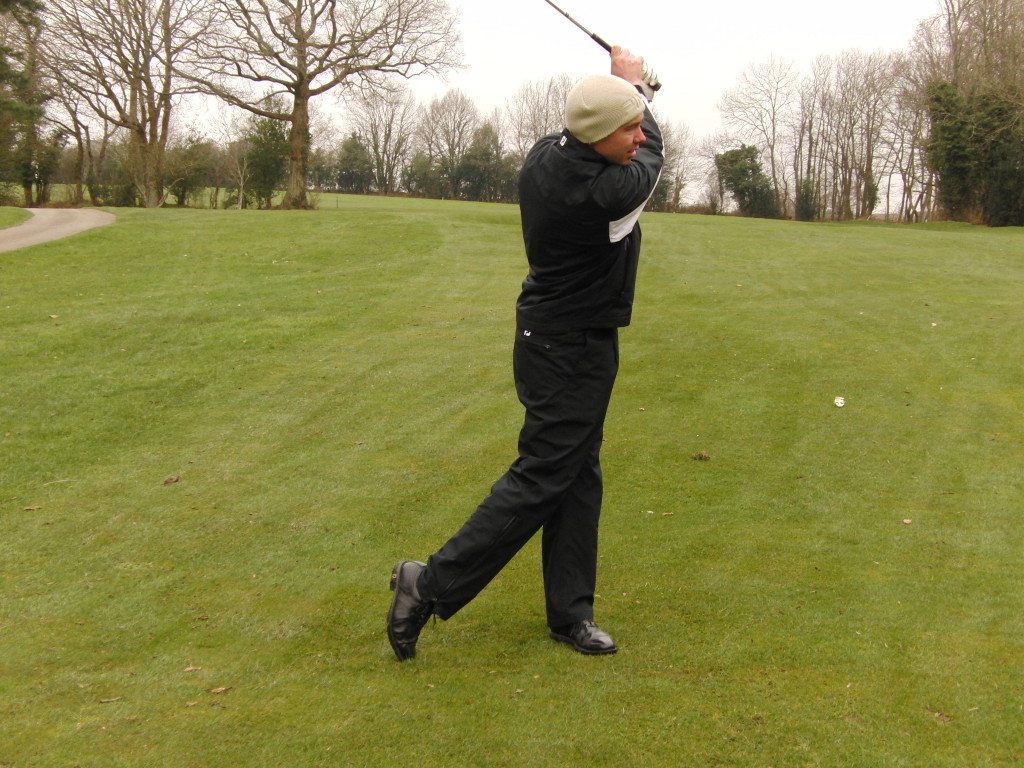
Shoulder High to Shoulder High
Once you have this in place make a note of your yardages and keeping referring to them when out playing on the course as this will certainly help improve this specific area of your game.
I hope you enjoyed the article, any comments or Questions then please leave a comment below..
Until next time I wish you all the golfing success
Mark
Mark Wood Golf Academy
Dale Hill hotel & golf club
East Sussex
Stance Width
Why stance width is important
Stance width is a very important part of the address position as this will effect how the body turns and moves in the golf swing.
Having a stance to wide will promote a very stable base but unfortunately you will lose a lot of mobility during the golf swing. It will in essence effect your body turn in the backswing and will also make it difficult for you to get your weight into the left side (for right handed golfers) in the downswing and into the follow through. This will cause the swing to get off plane and therefore potentially give you a poor path through impact, tilting the spin axis of the ball. It can also lead to poor strikes, thin or heavy and lack of power and distance.
If you address the ball with a to narrow stance you will have lots of mobility but very poor stability in the golf swing. You will be able to turn very well in the swing but the loss of balance due to the narrow stance is going to be a major problem. You will start to slow the swing down to keep some balance through the strike, leading to inconsistent strikes and a lack of power.
Try and check your stance regularly to make sure it is roughly shoulder width apart for your long game as this will give you the blend of both stability and mobility in the golf swing.
I hope you enjoyed the article, any comments or Questions then please leave a comment below..
Until next time I wish you all the golfing success
Mark
Mark Wood Golf Academy
Dale Hill hotel & golf club
East Sussex




